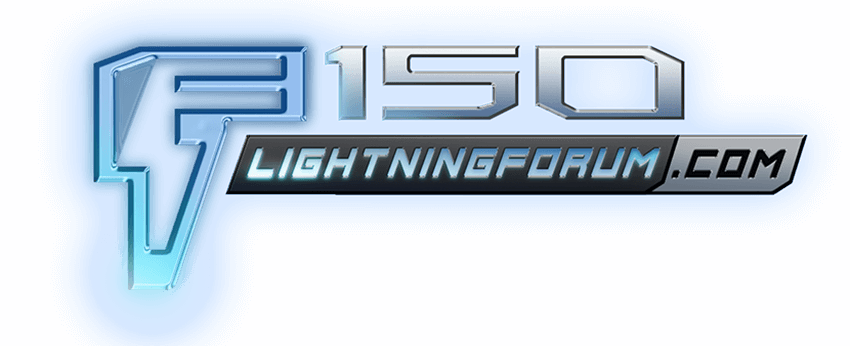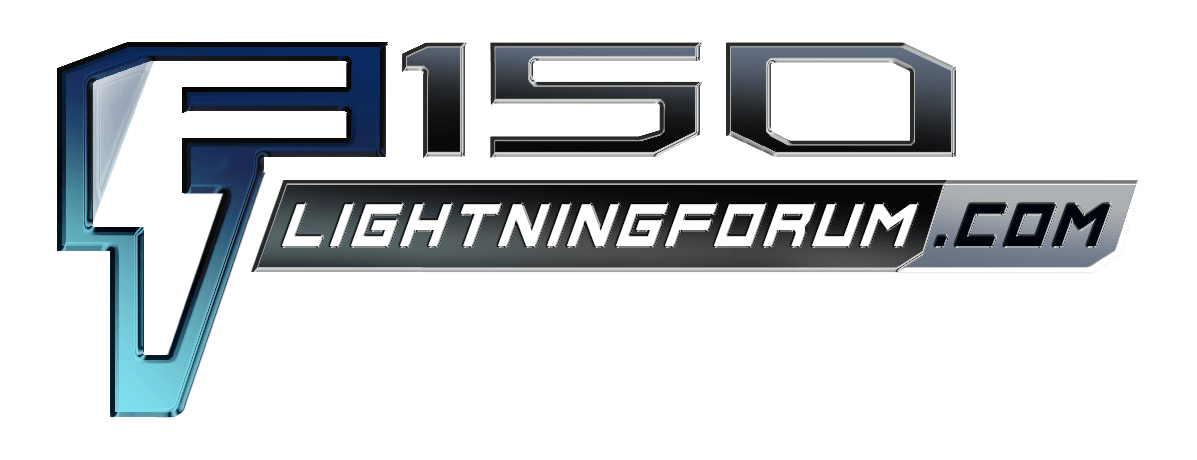evowner
Well-known member
- Thread starter
- #1
I would like to share some observations on a recent trip on Sat 02/01 in our 2024 E150 Lightning Lariot from Cincinnati, OH to Louisville, KY for a show at the beautiful Kentucky Arts Center. The mileage was approximately 260 round trip, which included several stops on the way to the venue.
We started off with an almost full battery, about 300 miles. We took I71 South, which heads mostly southwest, so I assume there was a head wind all the way, although I don’t know for sure or how strong it was. It is hard to tell when using Blue Cruise, which we used for the whole trip. It worked well for us. It is like having a chauffeur.
The trip down was mostly expressway, and then a few stops around Louisville. We had no heat or any other battery consuming accessories, except the radio (Sirius) and Blue Cruise. It was in the upper 40s and sunny so we were plenty comfortable. I drove at 65 mph 80% of the way. I upped it to 70 mph to see if I could tell if there was a significate reduction in mileage. I could not tell. The actual mileage for the trip down was 135; we used about 170 miles of the range of the truck. This is a much greater loss than we would have experienced with our other EVs.
After we got done at our second stop in Louisville at about 5pm I started thinking about the trip back. It appeared that we had enough range (130 miles) to make it if there were no unforeseen circumstances and we did not use any other battery draining accessories. I usually don’t like public chargers, mostly because it is more expensive than at home, however the risk of running out of electric or having to charge on the way home after midnight did not sound like fun. We had plenty of spare time for this trip and decided to try our first Tesla supercharger event.
I use Android Auto and turned on the filter in Google Maps for EV charging locations. The default filter listed stations with compatible connectors. I toggled that off and then it listed mostly the Tesla charging stations. I looked for the closest supercharger station, and it turned out that it was less than 2 miles away, and is next to a Meijer so there would be bathrooms as well as something to do. I then looked on the Tesla app to verify the location and check the current conditions. I saw that there were 12 chargers, 1a was not working, and 6 were in use. I was a little concerned that I may not be able to get in because more than likely the current users are taking every other slot.
When we arrived there were no open slots that we could use because of the need to have 2 open slots to charge the truck. It turns out that 1a, which was not working, is set up for vehicles that have the charge plug in the same location as the Lightning. After about 5 minutes and someone with a Tesla returned unplugged and left. We pulled into the slot and the front of the truck fit nicely between the chargers. I selected the charger in the Tesla app, and then I pulled out my adapter, which I purchased on amazon, and plugged it in. The first try did not work. If I had taken the time to read the instructions it would have worked fine. My process is that I connect the adapter to the Tesla charge cable and lock it in place, then plug the adapter into the truck. I pressed start charging in the Tesla app and it worked and charged the battery up to 90%, which is the setting I had for my Tesla model S, I guess I can change that to 100%. It took about 35 minutes to take it to 90% and cost $20. None of the Tesla owners came over objecting to us using 2 spaces, although I can imagine that might change if there were no other chargers open.
By doing it this way we really reduced any stress we would have had worrying about running out of electric. We were able to have heat, butt warmers and steering wheel heat all the way home. None of which we would have been able to use if we had not recharged. $20 well spent.
My first experience with the Tesla superchargers was excellent. This trip also just expanded the range that I would ever take this vehicle. We could have gone all the way to Nashville, then recharge there for the trip home. Prior to this we probably would have taken the Hybrid or another ICE vehicle.
I look forward to many more trips without the worry about range.
It turns out that all of the members on here were right about the public chargers being easy and not inconvenient.
Finally, thanks to all of those that shared their experiences with the Tesla superchargers which made ours much easier.
We started off with an almost full battery, about 300 miles. We took I71 South, which heads mostly southwest, so I assume there was a head wind all the way, although I don’t know for sure or how strong it was. It is hard to tell when using Blue Cruise, which we used for the whole trip. It worked well for us. It is like having a chauffeur.
The trip down was mostly expressway, and then a few stops around Louisville. We had no heat or any other battery consuming accessories, except the radio (Sirius) and Blue Cruise. It was in the upper 40s and sunny so we were plenty comfortable. I drove at 65 mph 80% of the way. I upped it to 70 mph to see if I could tell if there was a significate reduction in mileage. I could not tell. The actual mileage for the trip down was 135; we used about 170 miles of the range of the truck. This is a much greater loss than we would have experienced with our other EVs.
After we got done at our second stop in Louisville at about 5pm I started thinking about the trip back. It appeared that we had enough range (130 miles) to make it if there were no unforeseen circumstances and we did not use any other battery draining accessories. I usually don’t like public chargers, mostly because it is more expensive than at home, however the risk of running out of electric or having to charge on the way home after midnight did not sound like fun. We had plenty of spare time for this trip and decided to try our first Tesla supercharger event.
I use Android Auto and turned on the filter in Google Maps for EV charging locations. The default filter listed stations with compatible connectors. I toggled that off and then it listed mostly the Tesla charging stations. I looked for the closest supercharger station, and it turned out that it was less than 2 miles away, and is next to a Meijer so there would be bathrooms as well as something to do. I then looked on the Tesla app to verify the location and check the current conditions. I saw that there were 12 chargers, 1a was not working, and 6 were in use. I was a little concerned that I may not be able to get in because more than likely the current users are taking every other slot.
When we arrived there were no open slots that we could use because of the need to have 2 open slots to charge the truck. It turns out that 1a, which was not working, is set up for vehicles that have the charge plug in the same location as the Lightning. After about 5 minutes and someone with a Tesla returned unplugged and left. We pulled into the slot and the front of the truck fit nicely between the chargers. I selected the charger in the Tesla app, and then I pulled out my adapter, which I purchased on amazon, and plugged it in. The first try did not work. If I had taken the time to read the instructions it would have worked fine. My process is that I connect the adapter to the Tesla charge cable and lock it in place, then plug the adapter into the truck. I pressed start charging in the Tesla app and it worked and charged the battery up to 90%, which is the setting I had for my Tesla model S, I guess I can change that to 100%. It took about 35 minutes to take it to 90% and cost $20. None of the Tesla owners came over objecting to us using 2 spaces, although I can imagine that might change if there were no other chargers open.
By doing it this way we really reduced any stress we would have had worrying about running out of electric. We were able to have heat, butt warmers and steering wheel heat all the way home. None of which we would have been able to use if we had not recharged. $20 well spent.
My first experience with the Tesla superchargers was excellent. This trip also just expanded the range that I would ever take this vehicle. We could have gone all the way to Nashville, then recharge there for the trip home. Prior to this we probably would have taken the Hybrid or another ICE vehicle.
I look forward to many more trips without the worry about range.
It turns out that all of the members on here were right about the public chargers being easy and not inconvenient.
Finally, thanks to all of those that shared their experiences with the Tesla superchargers which made ours much easier.
Sponsored

